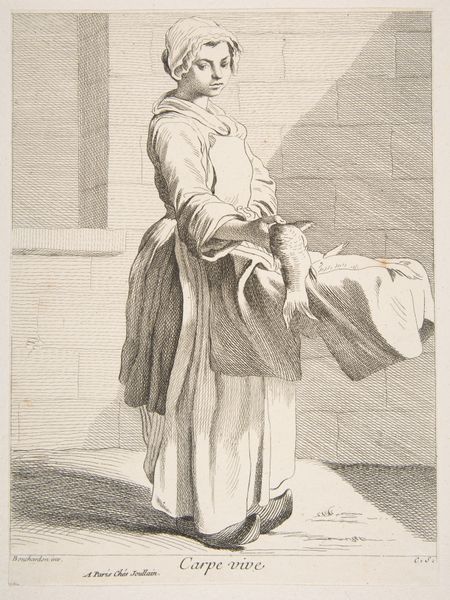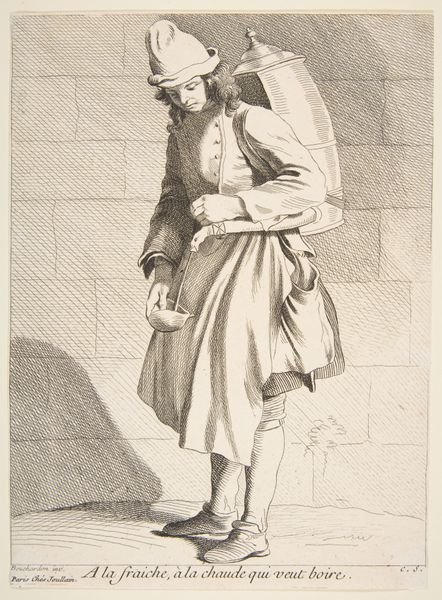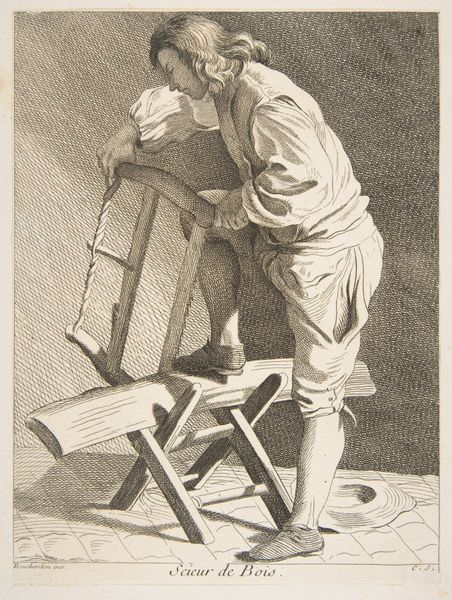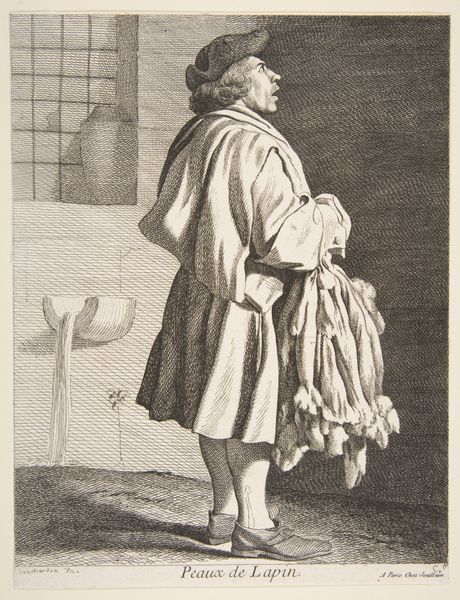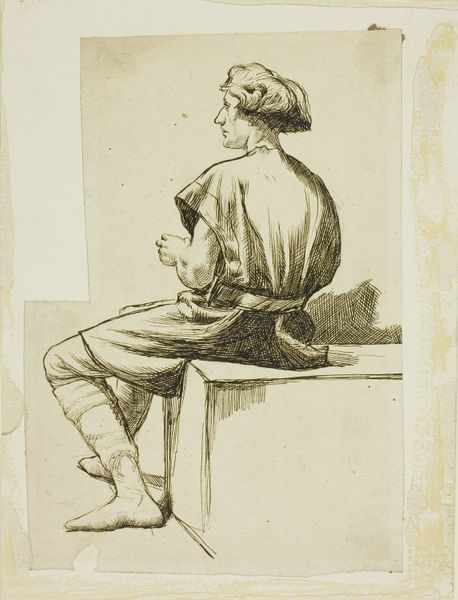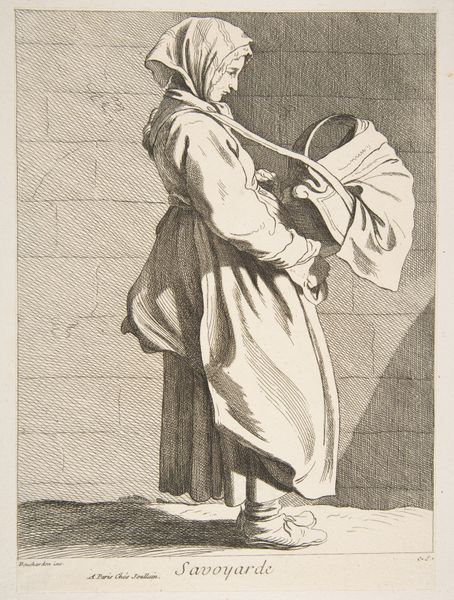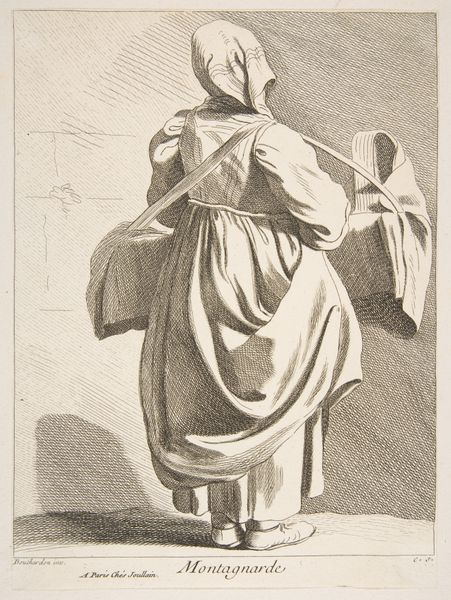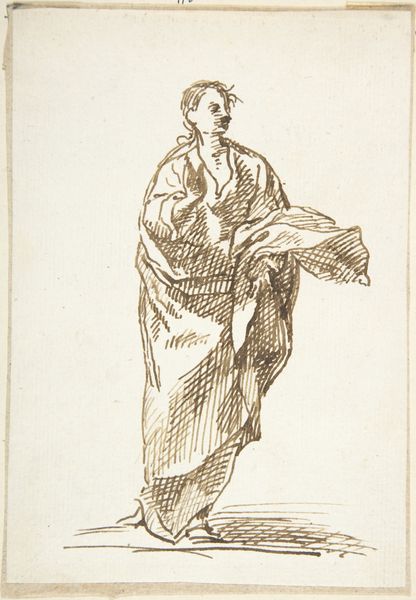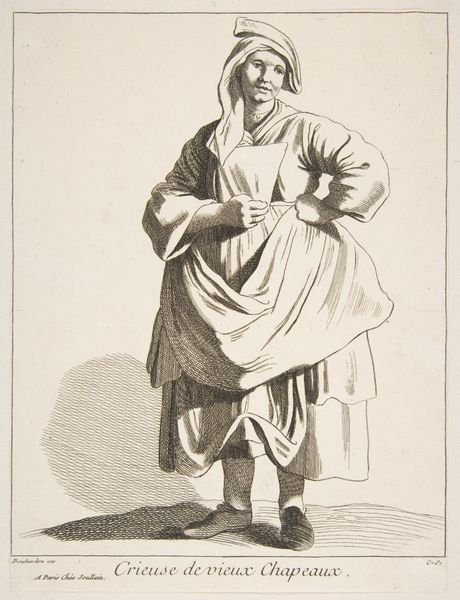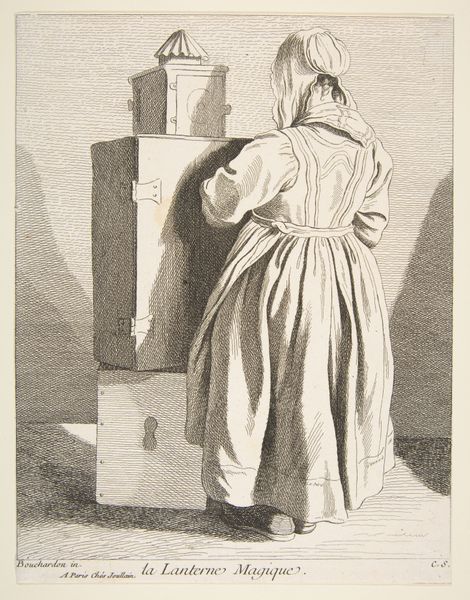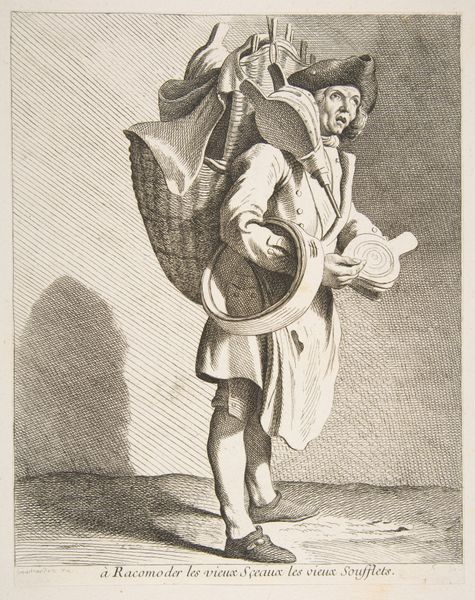
drawing, print
#
portrait
#
drawing
#
baroque
# print
#
men
#
genre-painting
Dimensions: Sheet: 9 3/16 x 6 15/16 in. (23.3 x 17.6 cm) Image: 8 7/8 x 6 7/8 in. (22.6 x 17.5 cm)
Copyright: Public Domain
Curator: This is "Wandering Vinegar Seller," an etching dating back to 1738, crafted by Anne Claude Philippe, the Comte de Caylus. Editor: My first impression is of poised resignation. The man’s gaze over his shoulder and the angle of his body suggests that his mind is preoccupied, lost in the weight of his labor. Curator: It’s a part of a larger project of Caylus, who was deeply invested in documenting the "costumes" of the Parisian working class during the reign of Louis XV. Prints like this allowed the aristocracy to imagine and categorize the life of everyday citizens. Editor: He's interesting, in that he embodies both classical statuary—check the contrapposto!—and then these common tools and materials. What does it signify, this conjunction of the common and the ideal? Curator: The choice of etching, a readily reproducible medium, hints at its dissemination and speaks to the burgeoning print market, feeding the public’s desire for these glimpses into lives outside their own social circles. It was not merely about the aesthetic appreciation, but a societal function as a visual compendium of Parisian life. Editor: Notice the light, hitting the planes of his sleeves, and illuminating his face as though from within. There is some nobility imbued here, not merely cataloging, but creating a sort of hero out of a figure we'd typically overlook. I sense pathos and the transformation of everyday burdens into symbolic trials. Curator: The man is more than a mere caricature. We might consider how these images contributed to the construction of social hierarchies. Does it perpetuate divisions, or provide an empathetic lens through which to view his work and perhaps even, reconsider it? Editor: And I’m drawn to this barrel. A vessel transformed—both a practical item for carrying the product but also visually representing ancient wine-making traditions, as if our vinegar vendor is a Bacchic figure in disguise. Is that perhaps a visual commentary on commerce, about something precious becoming more common, accessible to all? Curator: Indeed. Caylus was documenting the visual culture but he was part of that visual culture himself. I suppose what makes this print engaging, centuries later, is how it subtly reveals the complicated dance between art, commerce, and society. Editor: So true, these ordinary depictions often say the most. Everyday figures reveal not just trades and clothing but social complexities rendered permanent.
Comments
No comments
Be the first to comment and join the conversation on the ultimate creative platform.
